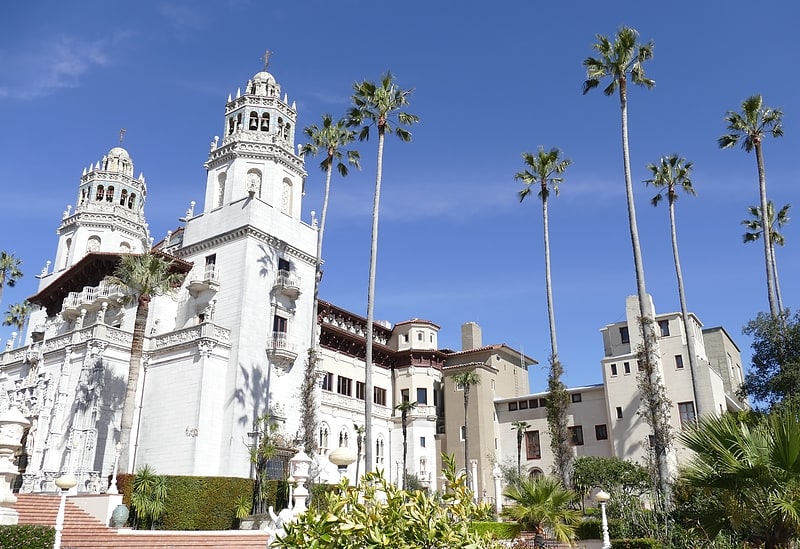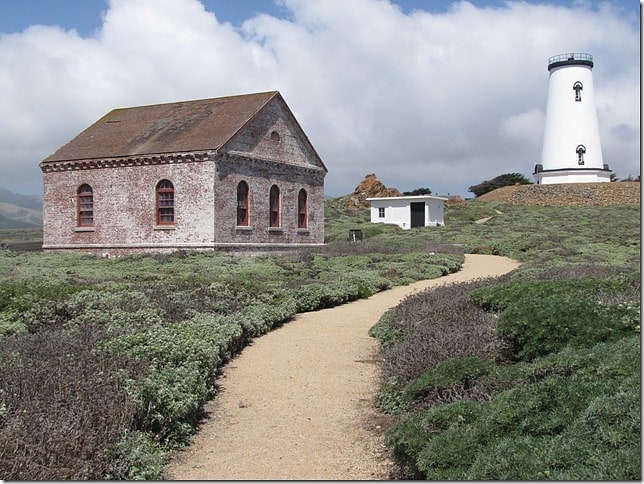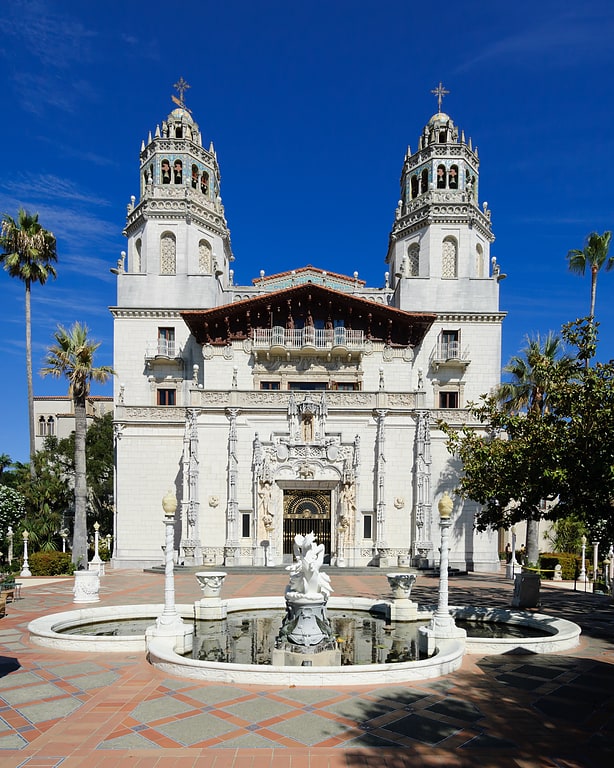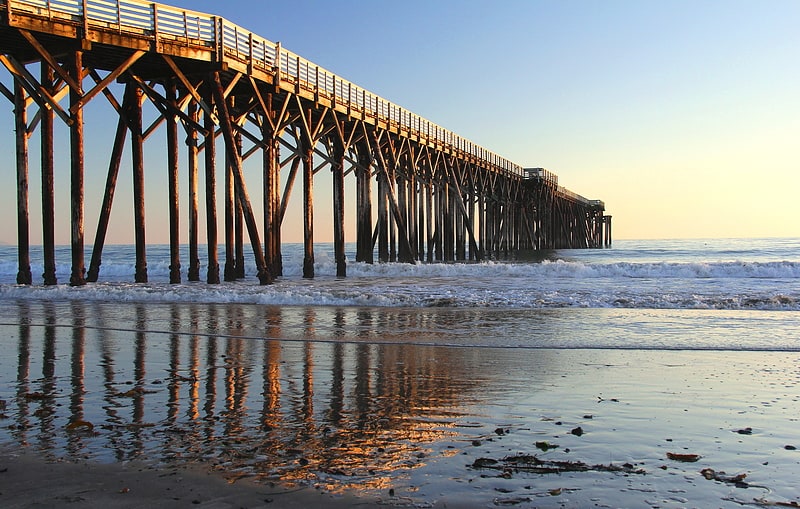Discover 4 hidden attractions, cool sights, and unusual things to do in San Simeon (United States). Don't miss out on these must-see attractions: Hearst Castle, Piedras Blancas Light Station, and Hearst Castle. Also, be sure to include William Randolph Hearst Memorial State Beach in your itinerary.
Below, you can find the list of the most amazing places you should visit in San Simeon (California).
Table of Contents
Hearst Castle

Museum in San Luis Obispo County, California. Hearst Castle, known formally as La Cuesta Encantada, is a historic estate in San Simeon, located on the Central Coast of California. Conceived by William Randolph Hearst, the publishing tycoon, and his architect Julia Morgan, the castle was built between 1919 and 1947. Today, Hearst Castle is a museum open to the public as a California State Park and registered as a National Historic Landmark and California Historical Landmark.
George Hearst, William Randolph Hearst's father, had purchased the original 40,000-acre (162 km2) estate in 1865 and Camp Hill, the site for the future Hearst Castle, was used for family camping vacations during Hearst's youth. In 1919 Hearst inherited some $11 million (equivalent to $171,925,144 in 2021) and estates including the land at San Simeon. He used his fortune to further develop his media empire of newspapers, magazines and radio stations, the profits from which supported a lifetime of building and collecting. Within a few months of Phoebe Hearst's death, he had commissioned Morgan to build "something a little more comfortable up on the hill", the genesis of the present castle. Morgan was an architectural pioneer; "America's first truly independent female architect", she was the first woman to study architecture at the School of Beaux-Arts in Paris, the first to have her own architectural practice in California and the first female winner of the American Institute of Architects Gold Medal. Working in close collaboration with Hearst for over twenty years, the castle at San Simeon is her best-known creation.
In the Roaring Twenties and into the 1930s, Hearst Castle reached its social peak. Originally intended as a family home for Hearst, his wife Millicent and their five sons, by 1925 he and Millicent had effectively separated and he held court at San Simeon with his mistress, the actress Marion Davies. Their guest list comprised most of the Hollywood stars of the period; Charlie Chaplin, Cary Grant, the Marx Brothers, Greta Garbo, Buster Keaton, Mary Pickford, Jean Harlow and Clark Gable all visited, some on multiple occasions. Political luminaries encompassed Calvin Coolidge and Winston Churchill while other notables included Charles Lindbergh, P. G. Wodehouse and Bernard Shaw. Visitors gathered each evening at Casa Grande for drinks in the Assembly Room, dined in the Refectory and watched the latest movie in the theater before retiring to the luxurious accommodation provided by the guest houses of Casa del Mar, Casa del Monte and Casa del Sol. During the days, they admired the views, rode, played tennis, bowls or golf and swam in the "most sumptuous swimming pool on earth". While Hearst entertained, Morgan built; the castle was under almost continual construction from 1920 until 1939, with work resuming after the end of World War II until Hearst's final departure in 1947.
Hearst, his castle and his lifestyle were satirized by Orson Welles in his 1941 film Citizen Kane. In the film, which Hearst sought to suppress, Charles Foster Kane's palace Xanadu is said to contain "paintings, pictures, statues, the very stones of many another palace – a collection of everything so big it can never be cataloged or appraised; enough for ten museums; the loot of the world". Welles's allusion referred to Hearst's mania for collecting; the dealer Joseph Duveen called him the "Great Accumulator". With a passion for acquisition almost from childhood, he bought architectural elements, art, antiques, statuary, silverware and textiles on an epic scale. Shortly after starting San Simeon, he began to conceive of making the castle "a museum of the best things that I can secure". Foremost among his purchases were architectural elements from Western Europe, particularly Spain; over thirty ceilings, doorcases, fireplaces and mantels, entire monasteries, paneling and a medieval tithe barn were purchased, shipped to Hearst's Brooklyn warehouses and transported on to California. Much was then incorporated into the fabric of Hearst Castle. In addition, he built up collections of more conventional art and antiques of high quality; his assemblage of ancient Greek vases was one of the world's largest.
In May 1947, Hearst's health compelled him and Marion Davies to leave the castle for the last time. He died in Los Angeles in 1951. Morgan died in 1957. In the same year, the Hearst family gave the castle and many of its contents to the State of California. It has since operated as the Hearst San Simeon State Historical Monument and attracts about 750,000 visitors annually. The Hearst family retains ownership of the majority of the 82,000 acres (332 km2) wider estate and, under a land conservation agreement reached in 2005, has worked with the California State Parks Department and American Land Conservancy to preserve the undeveloped character of the area; the setting for the castle which Shaw is said to have described as "what God would have built if he had had the money".[1]
Address: 750 Hearst Castle Rd, 93452 San Simeon
Piedras Blancas Light Station

Light station in San Luis Obispo County, California. Piedras Blancas Light Station is located at Point Piedras Blancas, about 5.5 miles west by northwest of San Simeon, California. It was added to the California Coastal National Monument in 2017.[2]
Address: 15950 Cabrillo Hwy, 93452 Cambria
Hearst Castle

Museum in San Luis Obispo County, California. Hearst Castle, known formally as La Cuesta Encantada, is a historic estate in San Simeon, located on the Central Coast of California. Conceived by William Randolph Hearst, the publishing tycoon, and his architect Julia Morgan, the castle was built between 1919 and 1947. Today, Hearst Castle is a museum open to the public as a California State Park and registered as a National Historic Landmark and California Historical Landmark.
George Hearst, William Randolph Hearst's father, had purchased the original 40,000-acre (162 km2) estate in 1865 and Camp Hill, the site for the future Hearst Castle, was used for family camping vacations during Hearst's youth. In 1919 Hearst inherited some $11 million (equivalent to $171,925,144 in 2021) and estates including the land at San Simeon. He used his fortune to further develop his media empire of newspapers, magazines and radio stations, the profits from which supported a lifetime of building and collecting. Within a few months of Phoebe Hearst's death, he had commissioned Morgan to build "something a little more comfortable up on the hill", the genesis of the present castle. Morgan was an architectural pioneer; "America's first truly independent female architect", she was the first woman to study architecture at the School of Beaux-Arts in Paris, the first to have her own architectural practice in California and the first female winner of the American Institute of Architects Gold Medal. Working in close collaboration with Hearst for over twenty years, the castle at San Simeon is her best-known creation.
In the Roaring Twenties and into the 1930s, Hearst Castle reached its social peak. Originally intended as a family home for Hearst, his wife Millicent and their five sons, by 1925 he and Millicent had effectively separated and he held court at San Simeon with his mistress, the actress Marion Davies. Their guest list comprised most of the Hollywood stars of the period; Charlie Chaplin, Cary Grant, the Marx Brothers, Greta Garbo, Buster Keaton, Mary Pickford, Jean Harlow and Clark Gable all visited, some on multiple occasions. Political luminaries encompassed Calvin Coolidge and Winston Churchill while other notables included Charles Lindbergh, P. G. Wodehouse and Bernard Shaw. Visitors gathered each evening at Casa Grande for drinks in the Assembly Room, dined in the Refectory and watched the latest movie in the theater before retiring to the luxurious accommodation provided by the guest houses of Casa del Mar, Casa del Monte and Casa del Sol. During the days, they admired the views, rode, played tennis, bowls or golf and swam in the "most sumptuous swimming pool on earth". While Hearst entertained, Morgan built; the castle was under almost continual construction from 1920 until 1939, with work resuming after the end of World War II until Hearst's final departure in 1947.
Hearst, his castle and his lifestyle were satirized by Orson Welles in his 1941 film Citizen Kane. In the film, which Hearst sought to suppress, Charles Foster Kane's palace Xanadu is said to contain "paintings, pictures, statues, the very stones of many another palace – a collection of everything so big it can never be cataloged or appraised; enough for ten museums; the loot of the world". Welles's allusion referred to Hearst's mania for collecting; the dealer Joseph Duveen called him the "Great Accumulator". With a passion for acquisition almost from childhood, he bought architectural elements, art, antiques, statuary, silverware and textiles on an epic scale. Shortly after starting San Simeon, he began to conceive of making the castle "a museum of the best things that I can secure". Foremost among his purchases were architectural elements from Western Europe, particularly Spain; over thirty ceilings, doorcases, fireplaces and mantels, entire monasteries, paneling and a medieval tithe barn were purchased, shipped to Hearst's Brooklyn warehouses and transported on to California. Much was then incorporated into the fabric of Hearst Castle. In addition, he built up collections of more conventional art and antiques of high quality; his assemblage of ancient Greek vases was one of the world's largest.
In May 1947, Hearst's health compelled him and Marion Davies to leave the castle for the last time. He died in Los Angeles in 1951. Morgan died in 1957. In the same year, the Hearst family gave the castle and many of its contents to the State of California. It has since operated as the Hearst San Simeon State Historical Monument and attracts about 750,000 visitors annually. The Hearst family retains ownership of the majority of the 82,000 acres (332 km2) wider estate and, under a land conservation agreement reached in 2005, has worked with the California State Parks Department and American Land Conservancy to preserve the undeveloped character of the area; the setting for the castle which Shaw is said to have described as "what God would have built if he had had the money".[3]
Address: 750 Hearst Castle Rd, San Simeon
William Randolph Hearst Memorial State Beach

Park in San Simeon, California. William Randolph Hearst Memorial State Beach is located near the historic town of San Simeon along California State Route 1, in San Luis Obispo County, California, United States. It is named for newspaper magnate William Randolph Hearst, whose family is closely associated with the area.[4]